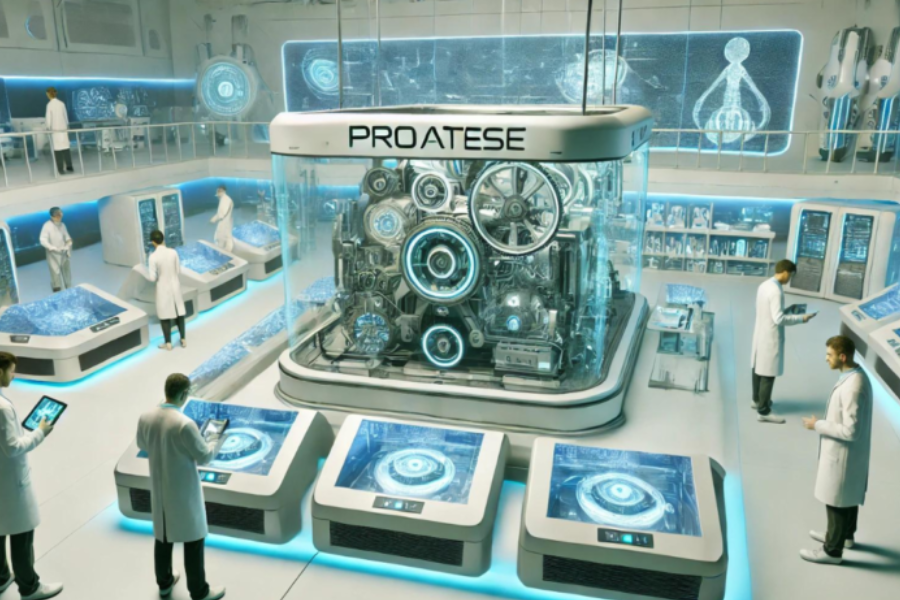Proatese: A Revolutionary Path to Protein Degradation
Presentation
Proteins assume fundamental parts in every single living life form, partaking in endless natural cycles. Be that as it may, when proteins become harmed or misfolded, they can gather in cells and add to a scope of serious medical issues, including neurodegenerative illnesses like Alzheimer’s, and even disease. To battle this, cells have created complex systems for protein debasement and reusing. One energizing forward leap in this space is the formation of proatese, a state of the art class of particles designed to target and separate explicit proteins specifically.
How Protein Corruption Functions
To comprehend how proatese functions, it’s useful to initially take a gander at how the body generally handles protein debasement. Cells depend on two essential pathways: the ubiquitin-proteasome framework (UPS) and autophagy. In the UPS, proteins are labeled with ubiquitin, a little protein that flags the proteasome to corrupt them. Autophagy is a more extensive cycle where cells encase their harmed parts, including proteins, in a layer bound vesicle called an autophagosome, which converges with a lysosome to stall the items.
Impediments of Traditional Methodologies
While both the UPS and autophagy are powerful for general protein upkeep, they aren’t without defects. For instance, the UPS can become overpowered when misfolded proteins aggregate in huge sums, prompting pressure inside the cell. Furthermore, a few proteins are impervious to these pathways, making them harder to dispose of and adding to infection movement.
Proatese: A Distinct advantage in Protein Focusing on
Proatese, named from the Greek roots “expert” (previously) and “bother” (to unwind), addresses a groundbreaking way to deal with protein corruption. In contrast to conventional pathways, proatese particles are intended to tie straightforwardly to an objective protein and separate it without depending on the cell’s normal debasement processes. This designated approach offers additional opportunities for treating a great many illnesses by zeroing in straightforwardly on the destructive proteins included.
Extraordinary Highlights of Protease
- Precision: Proatese molecules can be designed to specifically target certain proteins, reducing the risk of damaging healthy proteins and minimizing side effects.
- Effectiveness: Proatese works with remarkable efficiency, requiring only small amounts to achieve meaningful protein breakdown.
- Self-Limiting: Once proatese molecules complete their task, they are often designed to break down themselves, reducing the risk of lingering toxicity.
- Versatility: Proatese has the ability to target both intracellular (within the cell) and extracellular (outside the cell) proteins, broadening its potential therapeutic applications.
Restorative Capability of Proatese
The capacity of proatese to explicitly target and debase risky proteins opens up huge remedial potential outcomes. A portion of the sicknesses where proatese could have a significant effect include:
- Neurodegenerative Illnesses: Conditions such as parkinson Alzheimer’s, and Huntington’s sickness are set apart by the development of harmful, misfolded proteins. Proatese could be intended to debase these proteins, possibly easing back or halting sickness movement.
- Disease: In many kinds of malignant growth, cancer cells overproduce or transform proteins that drive their development and spread. Proatese could focus on these proteins, offering another procedure to stop growth movement.
- Hereditary Problems: Certain hereditary transformations bring about defective proteins that disturb typical cell capability. Proatese could specifically corrupt these imperfect proteins, reestablishing harmony.
- Irresistible Illnesses: Numerous infections and microbes rely upon explicit proteins to get by and reproduce. By focusing on these proteins, proatese could be utilized to hinder contaminations.
Challenges Ahead and the Way ahead
Notwithstanding its gigantic potential, a few difficulties should be tended to before proatese can be generally utilized in clinical settings:
- Conveyance: Productively conveying proatese particles to the right cells, especially in difficult to-arrive at regions like the cerebrum, stays a critical test.
- Particularity: Guaranteeing that proatese remains exceptionally intended for its objective proteins is pivotal to stay away from accidental aftereffects.
- Security: Proatese atoms should be painstakingly designed to limit poisonousness and guarantee they are ok for long haul use.
- Clinical Approval: Like any new treatment, proatese should go through thorough clinical preliminaries to demonstrate its adequacy and security in treating different sicknesses.
In spite of these obstacles, the potential for to upset how we treat illnesses driven by protein amassing and brokenness is energizing. Continuous examination and progressions in this field will probably prompt more successful medicines soon.
Conclusion
Proatese is ready to be a forward leap in the realm of protein debasement, offering a new and designated way to deal with taking out hurtful proteins. By zeroing in straightforwardly on illness-causing proteins, it holds the commitment of changing therapy choices for conditions like neurodegenerative problems, malignant growth, and, surprisingly, a few irresistible sicknesses. While challenges stay, the remedial capability of protease is colossal, and as examination proceeds, we can anticipate imaginative medicines that might change the scene of current medication.
Keep an eye for more news & updates on Vents Flow!





